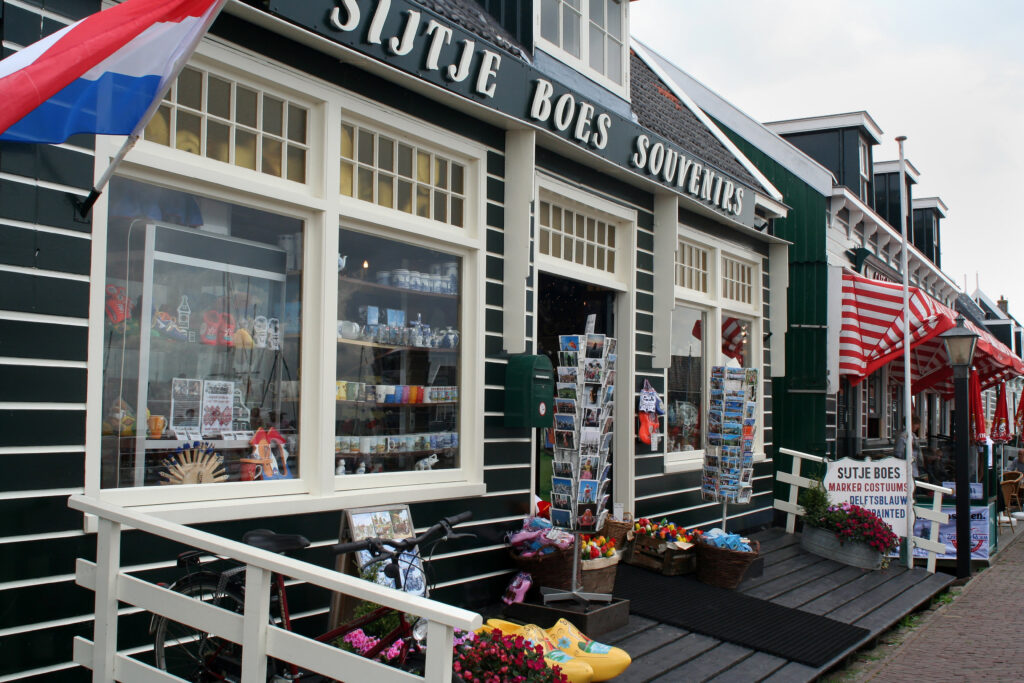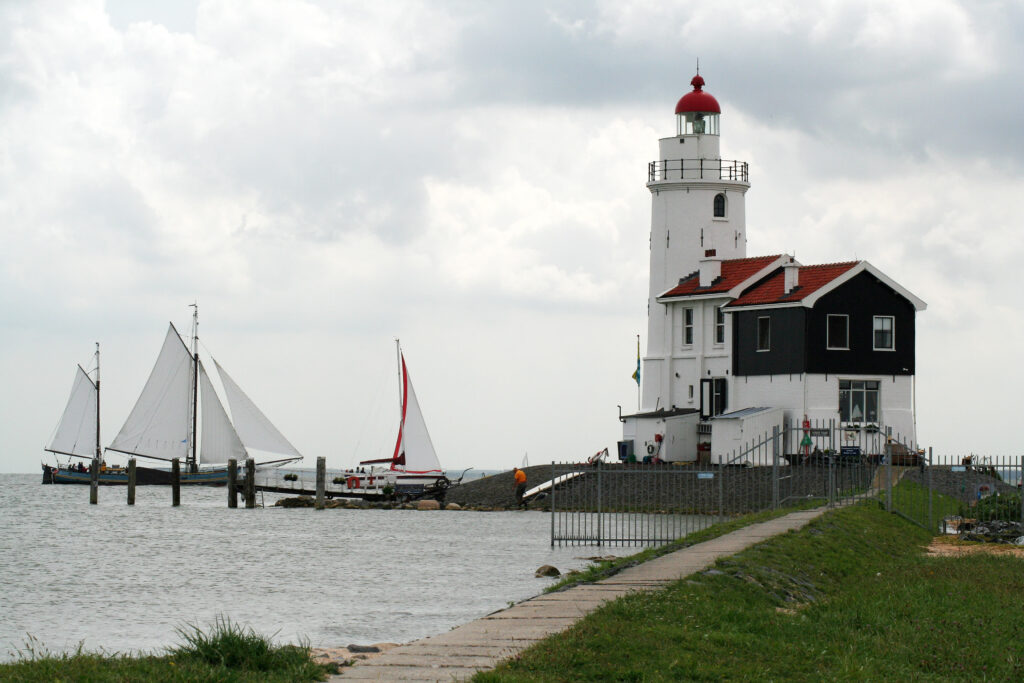Marken
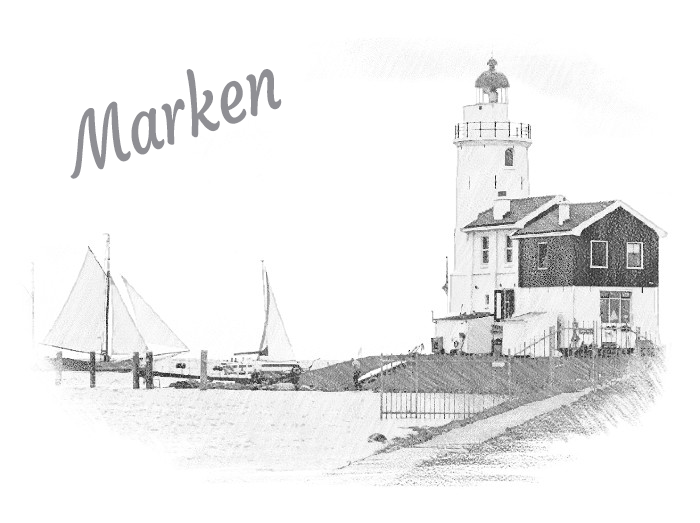
charming wooden houses
Marken’s charm lies in its well-preserved historic architecture, characterized by charming wooden houses painted in vibrant colors, and its iconic raised houses built on stilts to protect against floods. These unique architectural features are a reflection of the village’s centuries-old battle against the sea.
However, Marken is more than just its architecture. The village is home to a tight-knit community that takes immense pride in preserving their traditions. Visitors can experience the art of clog-making, witness locals dressed in traditional costumes, and explore the wooden shoe and costume museum that narrates the story of Marken’s cultural evolution.
The serene beauty of Marken is heightened by its tranquil surroundings. The village is encircled by the Markermeer, a serene lake offering breathtaking views and a refreshing sense of calm. Exploring Marken on foot or by renting a bike allows for a deeper connection with its natural beauty.
In a world that’s constantly evolving, Marken stands as a sanctuary of tradition and natural splendor. A visit to this Dutch treasure promises not only an aesthetic treat but also an opportunity to appreciate the symbiotic relationship between culture and nature.
SIJTJE BOES
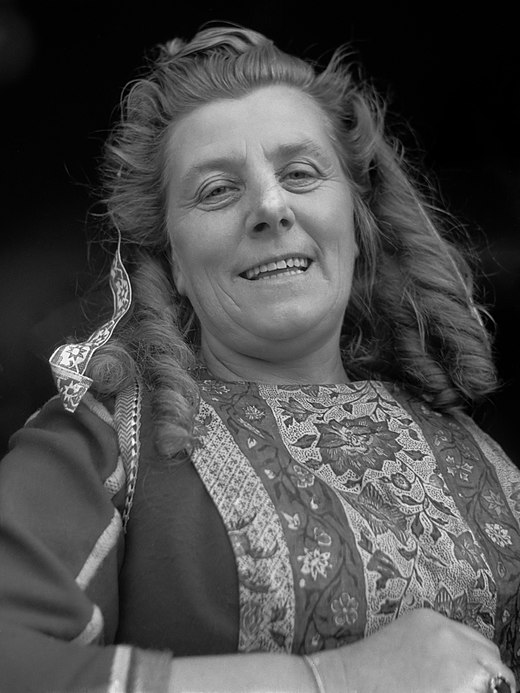
The legendary Sijtje Boes with her business instinct turned the island of Marken into a world-class tourist attraction. For over sixty years she showed her typical Marken house to visitors.
In the Havenbuurt 21 house, Sijtje ran a souvenir shop where she sold windmills, clogs and tulips. In 1983 ‘the uncrowned queen of Marken’ died, her shop is still doing good business.
The former fishing village has been a tourist attraction for at least a century. Marken’s striking costumes contributed to this. The wooden houses on stilts are characteristic. Even older are the so-called “yards”, artificial elevations on which people lived.
Before the Afsluitdijk was built, there were often floods. As a precaution, the residents had built their houses on stilts. With the arrival of the Afsluitdijk, the danger of flooding and flooding had passed. They walled off the space under the houses and, if so, added a ground floor.
FLOOD KILLED 16
The flood of 1916 killed 16 people on the island and left many homeless. This disaster gave the impetus to the construction of the Afsluitdijk and the Zuiderzee Works.
terpen
De bewoners wierpen hopen aarde op, verhogingen op het eiland, om zichzelf tegen overstromingen te beschermen. De terpen waren klein, de huizen moesten dicht bij elkaar gebouwd worden. De steegjes waren ertussen erg klein en net breed genoeg om elkaar te voet te passeren.
 Marken, een pittoreske sensatie in Noord-Holland, biedt een unieke en betoverende wandelervaring. Deze voormalige eilandgemeente staat bekend om haar historische charme, magische uitzichten en traditionele houten huizen. Een wandeling door Marken is als een stap terug in de tijd.
Marken, een pittoreske sensatie in Noord-Holland, biedt een unieke en betoverende wandelervaring. Deze voormalige eilandgemeente staat bekend om haar historische charme, magische uitzichten en traditionele houten huizen. Een wandeling door Marken is als een stap terug in de tijd.Begin bij de haven
Je begint je wandeling in de haven van Marken. Hier zie je direct de groene en witte houten huizen die zo kenmerkend zijn voor het dorp. De haven zelf is een prachtige plek met vissersbootjes die weinig deinen op het water. Het is ook een uitstekende plek waar je een snack kunt kopen voordat je verder gaat.
Wandel door de Kerkbuurt
Vanuit de haven wandel je richting de Kerkbuurt, het hart van Marken. Hier staat de Grote Kerk, een opvallend gebouw uit de 19e eeuw. De kleine straatjes en authentieke huizen geven je een gevoel van hoe het leven hier vroeger moet zijn geweest. De lokale bewoners zijn trots op hun erfgoed en je ziet veel goed onderhouden huizen en tuinen.
Bezoek het Marker Museum
Het Marker Museum is een must-see tijdens je wandeling. Dit museum, gevestigd in zes historische huizen, geeft je een kijkje in de geschiedenis en cultuur van Marken. Je leert over de traditionele klederdracht, de visserij en het dagelijks leven op het eiland. Het museum heeft ook een collectie oude foto’s en artefacten die de rijke historie van Marken illustreren.
Door de Rozewerf
Vervolgens wandel je richting Rozewerf, een van de oudste buurten van Marken. Hier vind je charmante houten huisjes langs kleine straatjes en grachten. De Rozewerf ligt direct aan het water en biedt een prachtig uitzicht over het Markermeer. Dit is een perfecte plek voor een fotomoment.
Geniet van de natuur langs de dijk
Vanaf Rozewerf kun je de wandeling voortzetten langs de dijk. De dijk omringt Marken en biedt een prachtig uitzicht over het water en de aanwezige natuur. Hier kun je genieten van de rust en de frisse lucht. Het is ook een geweldige plek om vogels te spotten, daarbuiten is het gebied rijk aan verschillende vogelsoorten.
Vuurtoren Het Paard van Marken
Een van de hoogtepunten van je wandeling is de vuurtoren Het Paard van Marken, gelegen aan de oostkant van de sterkte. Deze opvallende vuurtoren, gebouwd in 1839, is een van de meest gefotografeerde bezienswaardigheden van Marken. Het is een rustige en afgelegen plek waar je kunt genieten van het panoramische uitzicht over het Markermeer.
Terug naar de haven
Sluit je wandeling af door terug te keren naar de haven. Hier kun je nog niet eens nagenieten van het uitzicht, misschien een lokaal souvenir kopen of een kopje koffie drinken in een van de gezellige cafés.
Samenvatting
Een wandeling door Marken biedt een mix van historische bezienswaardigheden, prachtige natuur en een rustige, tijdloze sfeer. De kleine straatjes, traditionele houten huizen en magische uitzichten maken het een unieke ervaring die je niet snel zult vergeten.


The coat of arms of Marken was awarded to the then municipality of Marken on 26 June 1816 by the High Council of Nobility. The coat of arms shows a blue (glaze in heraldry) shield with a moraine head made of gold. The origin is unknown. It is suggested that it is either Christ or Saint Mauritius.
The weapon has not been used since 1991, when Marken was absorbed into the municipality of Waterland.
horse of marken
The Lighthouse of Marken, popularly called the Paard van Marken, was designed by Jan Valk and built in 1839 and stands on the eastern tip of the island of Marken. The lighthouse has a light height of 16 meters and a light range of 9 nautical miles. The tower started in 1700 as a square lighthouse. Later, a brick building with a residence and storage place was added to the lighthouse, which gave the tower its characteristic shape.
The lighthouse regularly suffers from drifting ice. In 1971 this was so bad that the tower was pushed a few centimeters from its place. The lightkeeper’s house next to the tower is inhabited.
MARkER MUSEUM
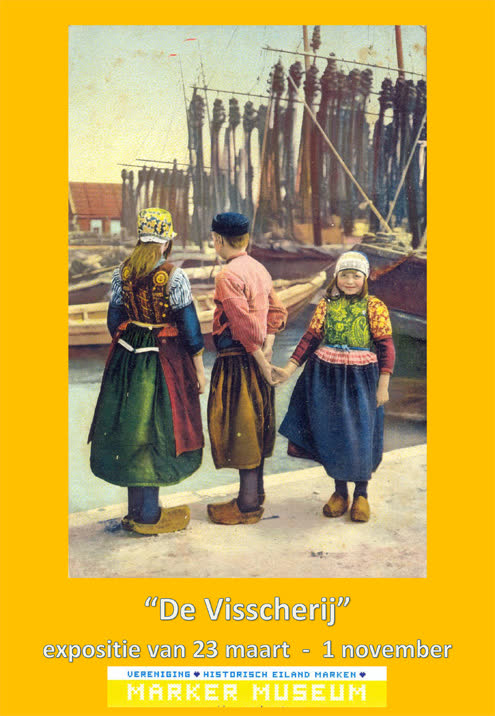
Marker Museum is a local museum in the village of Marken in the Netherlands. The museum focuses on the history of Marken, including its fishing heritage. The museum consists of six smokehouses where eel was smoked. The smokehouses are no longer in use. The building is a national monument.







